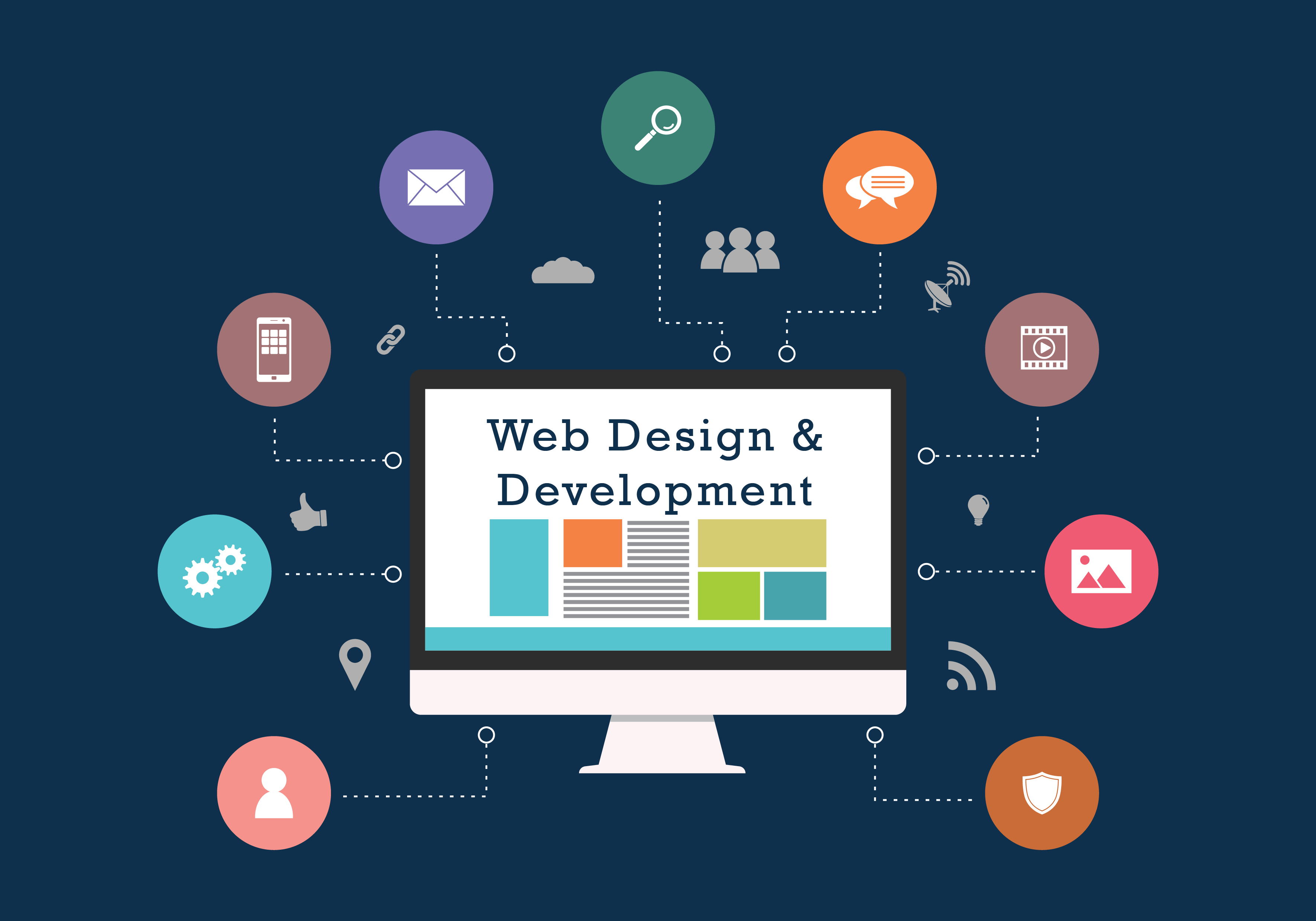Imaginative Web Design for a Magnificent Online Presence
Comprehending the Value of Website Design in Enhancing Individual Experience and Engagement
In the electronic landscape, the value of website design in forming customer interactions can not be overstated. A well-crafted internet site surpasses aesthetics; it works as a crucial tool for organizations to interact their brand name identity and worths efficiently. Recognizing exactly how website design affects user experience and involvement is vital for businesses seeking to stand apart in a jampacked online setting. From the initial perception a site visitor forms to the simplicity of navigation and eventually the conversion price, every aspect of website design plays a critical function in establishing the success of a web site.
Impact of Website Design on Individual Assumption
When it concerns the online world, internet style plays an important role fit just how customers perceive an internet site and its material. The style components, layout, shades, typefaces, and general visual appeals of a site all work with each other to develop an impression that can substantially impact user assumption. A properly designed web site not just brings in users but also keeps them engaged and motivates them to discover even more.
User understanding is influenced by numerous design aspects. For example, a organized and tidy design communicates professionalism and reliability, making individuals more likely to remain on the site. In addition, using proper colors and fonts can stimulate certain feelings and improve readability, thus boosting the overall user experience. On the other hand, a badly designed internet site with chaotic pages, puzzling navigation, or out-of-date visuals can lead and discourage users to high bounce rates.

Aspects of User-Friendly Style
What key parts add to the production of an easy to use internet design that improves the general online experience for visitors? Easy to use style is essential for guaranteeing that site visitors can navigate a site easily, discover the details they need promptly, and have a satisfying experience. One crucial component of user-friendly style is instinctive navigating. This includes a clear food selection structure, quickly accessible links, and a search function that aids customers discover details content. Receptive style is likewise crucial, guaranteeing that the web site adapts seamlessly to various gadgets and display dimensions.
Along with navigation and responsiveness, making use of white room can dramatically affect user experience. White space aids to develop a minimalist and tidy design, making it simpler for visitors to concentrate on the web content. Constant branding, including the usage of shades, typefaces, and images, likewise plays an essential function in producing a cohesive and aesthetically enticing design that improves customer engagement.
Function of Visual Charm in Engagement
The foundation laid by easy to use design principles, such as instinctive navigation and receptive formats, sets the stage for discovering the substantial influence of aesthetic appeal on customer engagement. Aesthetic charm plays a crucial function in catching customers' interest and keeping them involved on a site. When a web site is visually enticing, it creates a favorable first impact, instilling trust fund and trustworthiness view it in the individual. Colors, typography, pictures, and overall aesthetics add to the overall appeal of a web site.
Integrating aesthetically appealing elements not just boosts the customer experience however also affects customer habits. Researches have actually shown that users are most likely to stay much longer on a website that is visually enticing compared to one that is plain or obsolete (web design). Furthermore, aesthetic charm can assist share details extra successfully, leading customers through the content and prompting them to take preferred actions
Enhancing Navigation for Better Experience
Effective navigation plays a critical duty in boosting the overall user experience of a website, ensuring seamless interaction and expedition for site visitors. A well-structured navigation system guides individuals via the website, assisting them discover the details they look for swiftly and easily. Instinctive and clear navigating menus, such as dropdown food selections, breadcrumbs, or search bars, improve individual experience by reducing the time and initiative called for to find particular material.
Additionally, carrying out responsive design concepts in navigation enables a consistent experience throughout different gadgets, dealing with the differing requirements of individuals accessing the internet site from desktop computers, laptops, or mobile phones. By enhancing navigation for mobile phones with touch-friendly elements and simplified menu structures, designers can better improve user interaction and satisfaction.
In addition, including visual hints like contrasting shades, float effects, or animations can attract interest to important navigation components, enhancing functionality and leading customers via the site effectively. Generally, focusing on navigation in internet design brings about boosted user experience, increased engagement, and higher Recommended Reading retention prices.
Conversions and Brand Commitment Benefits
Enhancing a web site's navigation not just enhances individual experience however additionally contributes significantly to increasing conversions and promoting brand name loyalty. When individuals can conveniently discover what they are trying to find on a site, they are a lot more likely to involve with the content and eventually convert, whether that means making a purchase, enrolling in a newsletter, or filling in a contact kind. A well-structured navigation system overviews individuals with the internet site seamlessly, leading them to the view preferred activities and increasing the possibility of conversion.
When users have a positive communication with an internet site, they are much more likely to return in the future, suggest the site to others, and develop a sense of depend on and commitment in the direction of the brand name. Spending in internet design to enhance individual experience can have a direct influence on conversions and long-lasting brand name loyalty.

Conclusion
In conclusion, the importance of internet design in enhancing customer experience and engagement can not be overemphasized. By concentrating on components such as user-friendly layout, aesthetic charm, and navigation, sites can efficiently keep and record user passion.
When it comes to the on the internet world, internet style plays a vital function in forming how users view a website and its material. The layout aspects, format, colors, typefaces, and overall looks of an internet site all work together to create a first perception that can considerably influence individual assumption. On the various other hand, an inadequately designed web site with messy web pages, confusing navigation, or outdated visuals can lead and discourage individuals to high bounce rates.
Integrating visually enticing components not only boosts the customer experience yet likewise affects individual actions. website developer. By focusing on aspects such as user-friendly design, visual charm, and navigating, sites can properly capture and keep user interest